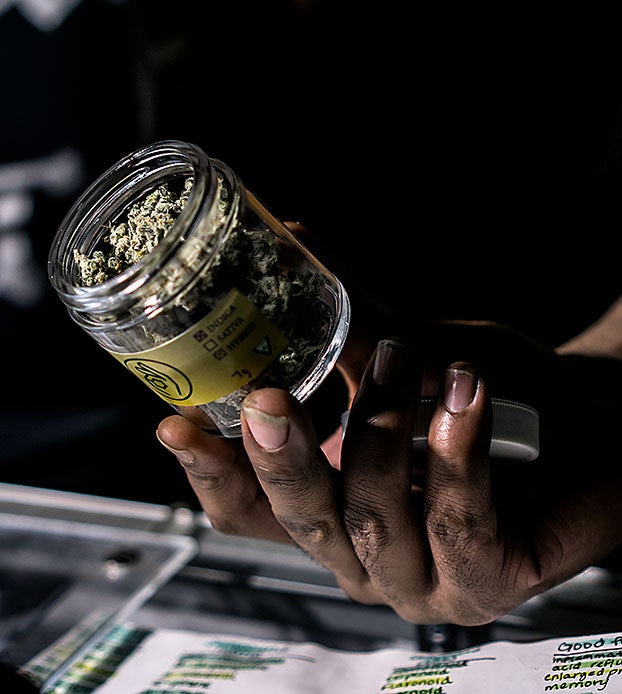Depending on how it’s grown, smoking a one-gram joint can have the same carbon footprint as driving 22 miles in a Prius — about 10 pounds of carbon dioxide.
If you live in Colorado, the emissions produced growing the weed an average Coloradan cannabis user consumes in a year is equivalent to 60% of the total household carbon imprint, according to a recent report.
Indoor cultivation’s carbon footprint is so energy intensive that it is indefensible from an energy and environment perspective, argued the authors of the report.
Many cultivators prefer indoor cultivation because it makes possible five or more grow cycles per year, compared to only one or two outdoors. It also gives you better control over lighting, temperature, and humidity.
Adding to the market and botanical pressures, in many states regulators only allow indoor cultivation. And because interstate commerce is a non-starter with cannabis for the time being, cultivators in colder climates like Michigan or Montana cannot import cannabis from sunnier locales like California and must grow their own indoors.
But there’s a price.
Four times the energy as the pharmaceutical industry
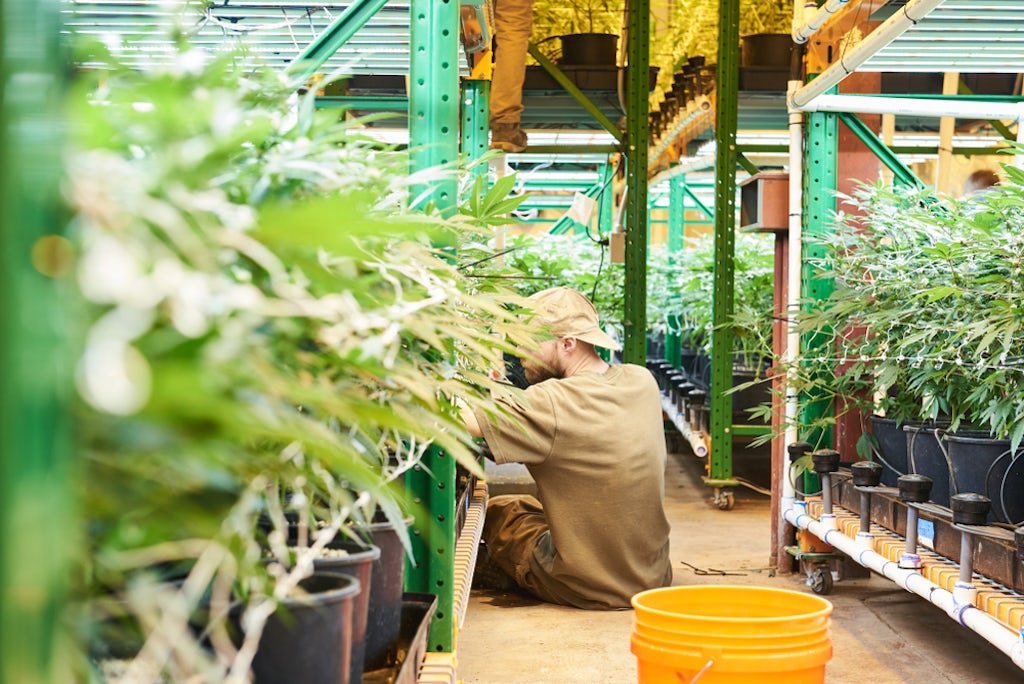
“Some of the nation’s hardest-earned progress towards climate change solutions is at risk as regulators continue to ignore this industry’s mushrooming carbon footprint,” researchers Evan Mills and Scott Zeramby wrote in the upcoming book, “The Routledge Handbook of Interdisciplinary Cannabis Research.”
An estimate from 2012, when cannabis production was much lower than it is today, found that indoor cannabis cultivation consumes 20 billion kilowatt-hours of electricity and produces 15 million metric tons of CO2 that is released into the atmosphere each year.
“The emissions associated with one kilogram of processed cannabis are equivalent to those of driving across the country 11 times in a 44-mpg car,” they wrote.
Mills states that this national energy expenditure is more than four times the aggregate U.S. pharmaceutical industry energy expenditure. A 2018 study by Frontier Data found that combined with illegal cultivation, the total electricity consumption by cannabis production climbs to 4.1 million megawatt hours, roughly the amount generated annually by the Hoover Dam.
A March 2021 report found that the greenhouse gas emissions during the life cycle of indoor-grown cannabis in the United States ranged from 2,283-5,184 kg of CO2-equivalent per kilogram of dried flower.
That report, which made headlines in cannabis industry and mainstream media alike, explained that the emissions are the result of electricity production and natural gas consumption for the indoor grows, largely for air circulation and high-intensity grow lights, as well as the use of carbon dioxide for accelerated plant growth.
Lighting intensities for cannabis plants “can be 50-200 times higher than a typical office setting and are run for 12, 18, or 24 hours, depending on the stage of the plant life cycle.”
The significant energy required to create an artificial climate for plants indoors causes cannabis to be extremely greenhouse gas emissions intensive compared to other agricultural products, the researchers wrote.
An even bigger problem as colder states legalize cannabis
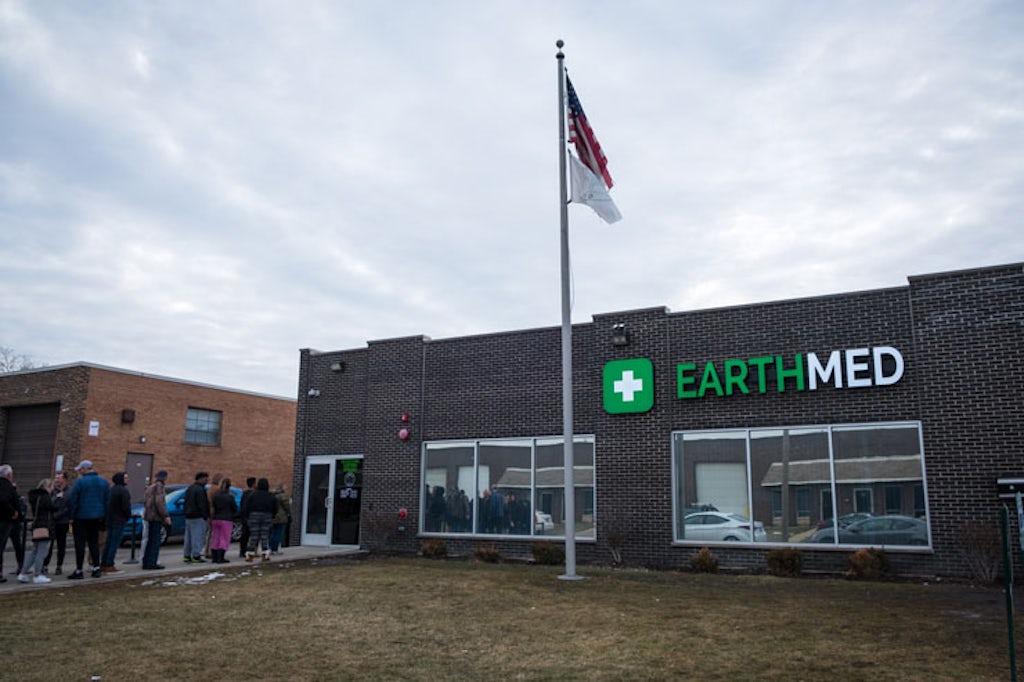
The energy demands of indoor cannabis stand to become more of a concern in the coming years, as more states legalize, in particular in the Midwest where the weather is colder and growing outside is likely to not be sufficient to meet customer demand.
“Each state will need to understand how this newly legalized market will increase energy loads and curtail progress towards local energy efficiency targets or climate goals,” Molly Graham, programs director of the Midwest Energy Efficiency Alliance, told The Cannigma. “Typically, these states are all starting from scratch. If energy efficiency isn’t considered at the outset of designing any indoor agricultural facility, a lot of energy will be wasted.”
Because of their climates, these states will require more heating for the processing and growing of cannabis as well. In addition, because cannabis is illegal on the federal level, marijuana must be grown within the state it is purchased in, meaning that in colder states such as South Dakota or Michigan, there is no option to import cannabis from warmer, sunnier states like California.
“The climate is certainly the biggest differentiator between the Midwest and the western US,” Graham added. “Growing cannabis outdoors year-round isn’t an option here. Even if cultivators choose to grow outdoors in the moderate months, this would likely not be sufficient to meet customer demand for cannabis.”
But the problems aren’t just regional. Many localities have banned outdoor cultivation for reasons of security but also because the plant is considered a nuisance.
California is “a cannabis-climate train wreck driven by ill-informed policymaking,” research Evan Mills said, due to its support of indoor cultivation at the expense of outdoor.
Those problems are not insurmountable, however. As Mills put it, “if giant internationally sanctioned opium poppy plantations for pain-management drugs can be secured outdoors, surely cannabis farms can do so as well.”
But is outdoor cultivation less damaging to the environment even if it requires less energy consumption?
Outdoor cultivation isn’t always much better
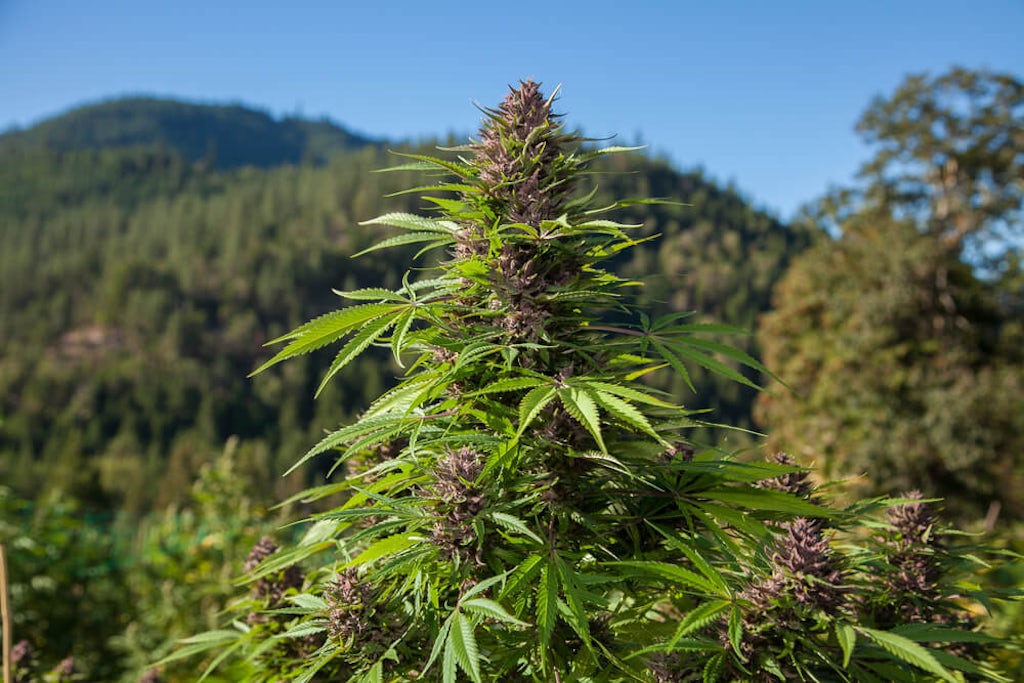
Outdoor cannabis production, both legal and illegal, is most common in the western United States, in particular in Washington, Oregon, and California. In many areas, outdoor cultivation — particularly of the illegal variety — takes place in rural, rugged regions where it can have an adverse effect on local wildlife, and lead to erosion and depletion of natural running water as tributaries are diverted for irrigation purposes.
In November 2020, the California Fish and Wildlife Department published a special issue of its journal on the impact of cannabis cultivation on fish and wildlife resources.
The chemical runoff from illegal cannabis growing sites in particular, the agency wrote citing previous reports, are putting several sensitive species at risk of contamination and poisoning.
The water consumed by both permitted and illegal cannabis cultivation, the agency continued, “is immense and often exceeds what would be considered sustainable for many of the watersheds that support threatened and endangered salmonid populations and other sensitive aquatic species.”
In addition, it stated that from a landscape perspective, cannabis cultivation creates “substantial increases in edge and deforestation,” and that the overall effects of various aspects of cannabis cultivation are scarcely explored or unexplored.
The paper focused specifically on cannabis cultivation in remote, forested watersheds of northwestern California which for decades have been the heart of illegal cannabis cultivation, an area colloquially known as “the Emerald Triangle.”
Is there a better way to grow cannabis?
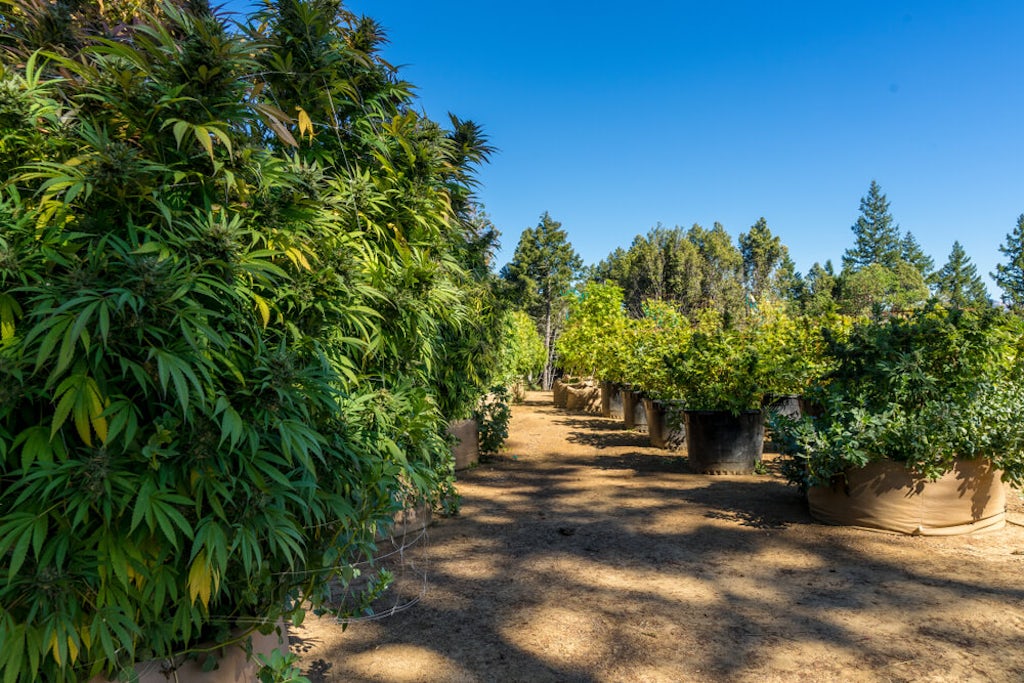
Contacted by The Cannigma the California Fish and Wildlife Department highlighted two “outstanding environmentally friendly farms” which they said are going the extra mile to grow cannabis in a sustainable fashion.
One of these was Huckleberry Hill Farms in southern Humboldt County. Owner and operator John Casali is a second generation Humboldt county cannabis grower whose farm is on the same piece of land where grew up. In his words, he followed his mom around from the time he was 10, helping her grow cannabis. Cannabis — like crab, albacore, and salmon fishing — was just another tool to allow his family to live in one of the most beautiful corners of the country, and on their own terms.
Huckleberry Hill Farms lies on a sensitive watershed above a coho salmon spawning tributary, which requires extra sensitive cultivation methods, including building rainwater catchments instead of taking water from the nearby streams.
Casali’s entire property is only 40 acres and the farm itself covers barely 5,000 square feet, about an eighth of an acre. Casali said he has a permit for a 2,500 square foot outdoor plot and a 2,500 square foot mixed light facility, which allows them to make two harvests per year so they have some extra income to make it through the dry or tougher part of the year.
In 2019, Casali said he grew about 350 pounds of cannabis and in 2020 about 650 pounds. He only grows a handful of strains, including one named after his mom — Sweet Marlene — and another, Amalfi, which he named after a recent trip he and his girlfriend took to the Amalfi coast in Italy. He said that in the regulated market each new strain requires more testing, and with a test required after every batch of 50 pounds, the cost can get very steep.
But is this model actually feasible for the cannabis industry? In particular, as consumer demand for more cannabis strains, cheaper prices, and just more and more marijuana products of all types increases?
To Casali, that’s besides the point.
“This property is not so much about making money. It’s about doing the right thing and making a difference in people’s lives,” he said.
As a young man, Casali spent eight years in federal prison for doing the same thing he does now — growing cannabis in Humboldt County. He said his farm is part of a goal of “changing the way we’re doing things.”
“We come from a tradition of selling all our products on the black market and always running from the cops, and Fish and Game was the worst enemy of all,” he said. “It can’t be that way if it’s going to work — and it has to work in order for the environment to prosper.”
Casali said he waters his entire property with rainwater from his catchment ponds and that he uses regenerative cultivating, adding, “I haven’t bought a new bag of soil in years.”
He admits that it’s not possible for companies to have large operations and scale upwards using his techniques, but that this is “really what differentiates the small sun-grown craft cannabis farmers from big ag.”
Does responsibility lie with cannabis consumers?

Andrew Black is the executive director of Sun+Earth Certified, a nonprofit that provides organic certification for cannabis and hemp farms based on three main principles: the cannabis must be grown outdoors under the sun, it must be planted in the ground, and the farm must incorporate other crops in the cannabis grow (“intercropping”).
The farming methods are part of the three pillars of Sun+Earth certification, which also include that the farm supports “human empowerment” (the rights and treatment to farm workers) and “community engagement,” which entails engaging “their local community with greater focus and intention.”
Black said that under his organization’s certification, these farms can use pesticides, but only those that are allowed under organic agriculture restrictions.
So far the company has certified around 40 farms since its launch on Earth Day 2019. The majority are in California, Andrew said, and are small, craft cannabis growers.
“I think most of the large corporate backed cannabis operations are worried about the bottom line and their operating system is for maximizing profit,” he explained. “The growers that we work with, they want to make money but they also want to maximize benefits to their environmental community and their human community, that’s the difference.”
Black states that the cannabis industry “is dominated by indoor corporate grows. We’re trying to offer a vision that’s an alternative,” but he also admits that a great deal of the onus is on the consumer.
“A lot of people don’t care how their cannabis is grown, they don’t think of it in the same way they think of the food they put in their body and the question is why?” he posited.
“Why isn’t the first thing that you think of when you walk into a retail pot shop, how was this cannabis grown? Is it healthy for me? Was it grown in a way that is healthy for my community? Most people don’t think like that, they walk in the store and they are overwhelmed by the variety and the spectacle of it.”
In a sense this reflects the complicated reality of the legal cannabis industry. For decades the plant was illegal, and the average consumer on the illicit market was mainly worried about price and not getting arrested, and didn’t have the luxury to ask if the marijuana was grown organically. With an above-ground legal cannabis industry, and shifting priorities among consumers, this could potentially change, Black said.
“If we can create a true demand from the consumer then we’ll be able to convert more traditional farms to using organic practices.”
He also pointed to the state of Calironia’s launching of the new OCAL certification for organic marijuana as a promising sign that things could be moving in the right direction.
Does legal cultivation mean better environmental practices?
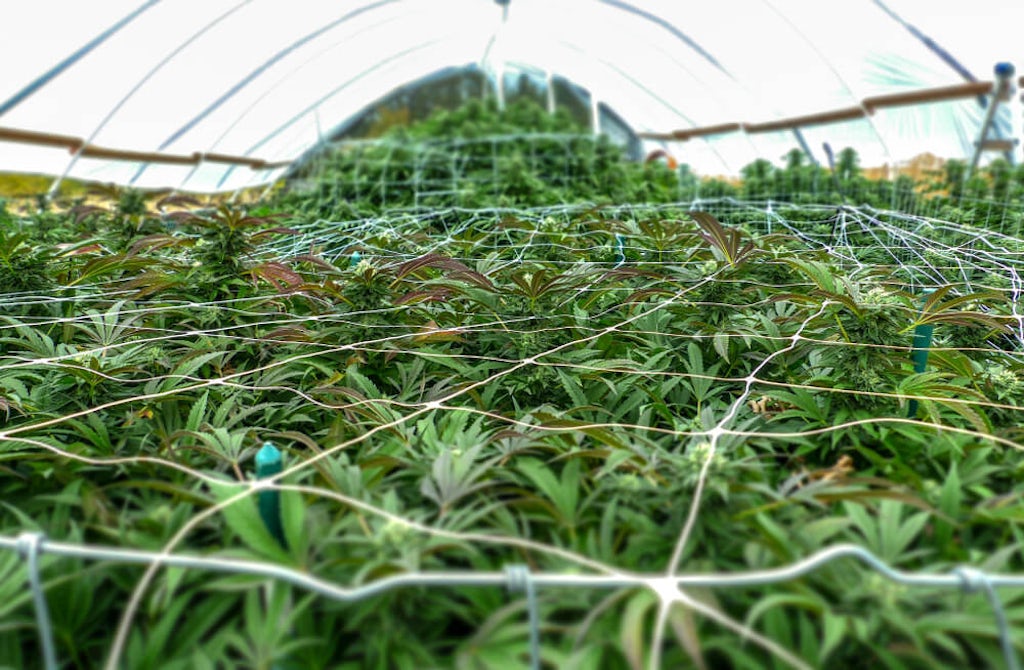
One theme that emerges from the literature on the environmental impact of cannabis cultivation is that legalization and better regulation could have a major, positive impact. If you can bring illegal cultivators into the system, they will have to meet the environmental guidelines of state and local authorities that certify them.
According to Van Butsic, co-director of the Cannabis Research Center at the University of California at Berkeley, there are thousands of cannabis farms across the north coast of California, and only about one-third of them are permitted. Most of them are relatively small farms compared to other forms of agriculture and that in the north coast region specifically, most cannabis farms, like Huckleberry Hill Farms, are under one acre.
Since 2014, the Cannabis Research Center has documented the locations of over 10,000 permitted and unpermitted cultivation sites in California. The center found that most cannabis farms — legal or otherwise — are located on parcels of land less than 40 acres in size, but larger than five acres.
Butsic stated that they are “sometimes located in areas that sort of pose an environmental risk in so far as they are in areas that aren’t typically used for agriculture — in remote areas with steep slopes, near sensitive watersheds, etc.”
Those risks can be mitigated, however, by the small size of many cannabis farms. “With appropriate management techniques, farms in these locations may be able to prevent or reduce many environmental impacts,” the center wrote in a brief on the matter.
“I want to emphasize that I think you can grow cannabis in the areas where it’s historically been grown,” Bustic added. “I don’t want to give the impression that the people growing in those areas are not doing a good job or cannot do a good job. But clearly, if cannabis was grown on lands that have been traditionally used for agriculture, there’d probably be less of an environmental threat.”
The best cannabis farmers have already adopted best practices, he continued, and any cannabis farmer in California who’s doing it in the permitted market is following pretty strict guidelines.
Ultimately, according to Butsic, the key is getting more unpermitted cannabis growers into the permitted, regulated system.
“If people make that leap, I think they’re doing all the things you need to do to get a permit. I don’t really have very big environmental concerns. California regulations are pretty robust.”
He also sounded an optimistic tone, saying that because of the high regulation faced by cannabis growers, they could potentially be a model for best environmental practices for other farmers.
“If cannabis can demonstrate that it can be a profitable industry doing it all organic with no pesticide residue, low herbicide residue, being able to verify [during] each stage of production that they’re doing things the environmentally sound way, perhaps they can put pressure on other types of agriculture to stay on there as well.”
The path forward: Smart policy and innovation
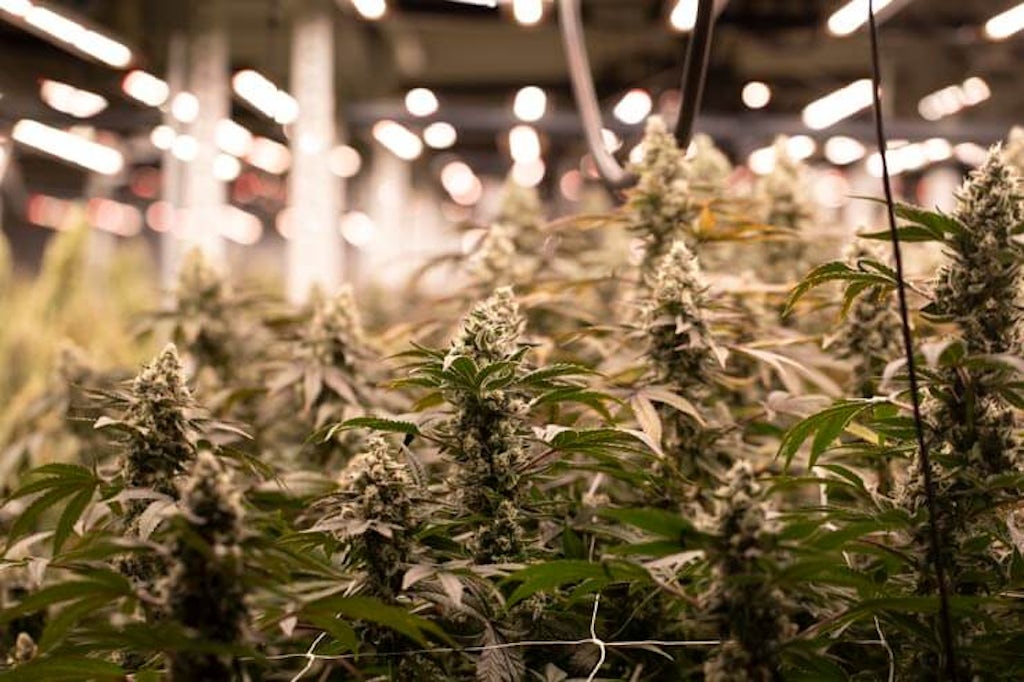
In January 2020, the Cannabis Research Center at the University of California at Berkeley published a report with five policy recommendations to be applied in areas where cannabis cultivation is legalized and regulated:
- Land use: Regulate the location or size of newly established cannabis farming areas, incentivize the voluntary relocation of existing grows onto suitable agricultural land. More generally, encourage regenerative agricultural practices and land-use planning that takes into account the impact at that specific site.
- Water use: Manage water use through precision irrigation, establish water licensing, and establish best practices for irrigation, rain capture, and water reuse.
- Pesticide use: Limit pesticide contamination through testing programs, supply chain tracing and environmental monitoring to curb illegal growing, and using biologically derived pesticides and integrated pest management methods.
- Energy use: Incentivize best practices for energy efficiency and renewable energy, scientifically track energy consumption, and set realistic energy efficiency goals.
- Air pollution: Use scientific testing to establish the harms of odor masking chemicals, and better yet, use carbon filtration and closed-loop extraction systems.
It is also clear that the environmental impact of cannabis is already being taken into account within the cannabis industry, in the world of utilities and energy, and by state and local authorities.
The importance of shifting towards outdoor cultivation was highlighted in a survey carried out by the Northwest Power and Conservation Council in Oregon in 2018, which found that 66 percent of grow facility’s electricity consumption went to lighting, and that “cannabis production has become less energy intensive with more outdoor cultivation.”
The footprint of indoor cultivation has led to some novel cannabis industry initiatives. These include one launched in Colorado last year — the CO2 Capture and Reuse Pilot Project, a pilot program to cut carbon emissions in which a Denver brewery will capture the excess carbon dioxide produced during fermentation and then provide it to cannabis growers to use in cultivation of their crops.
Sign up for bi-weekly updates, packed full of cannabis education, recipes, and tips. Your inbox will love it.

 Shop
Shop Support
Support



